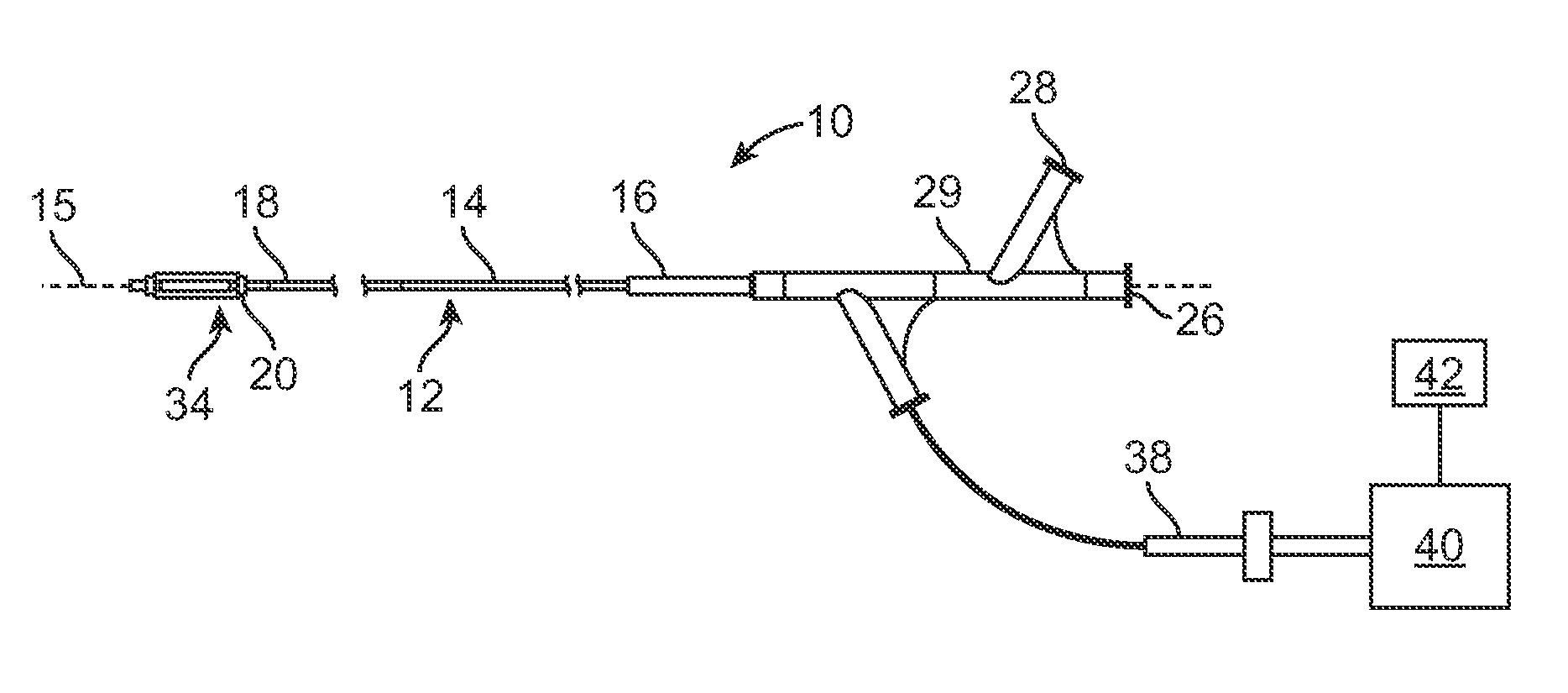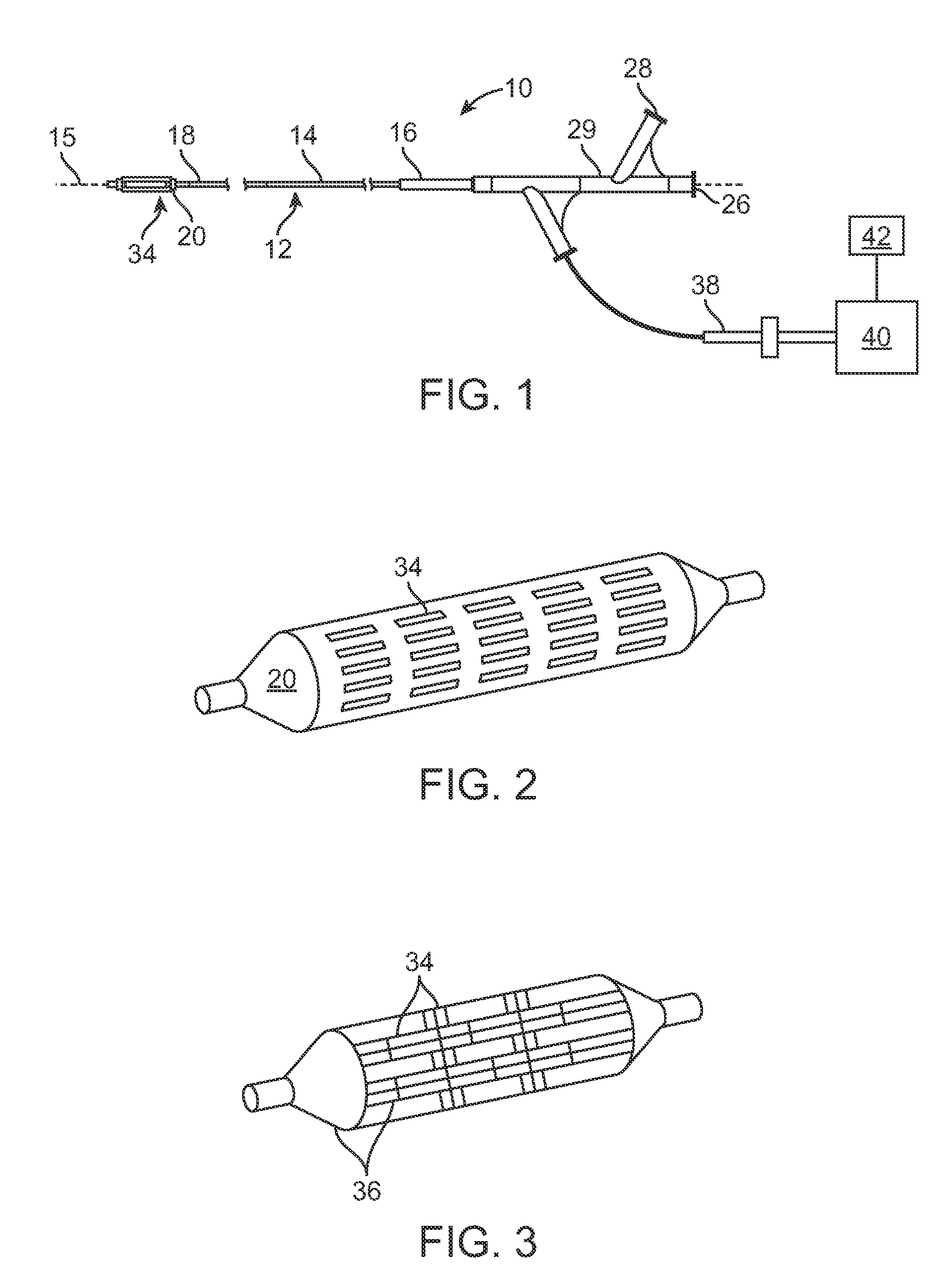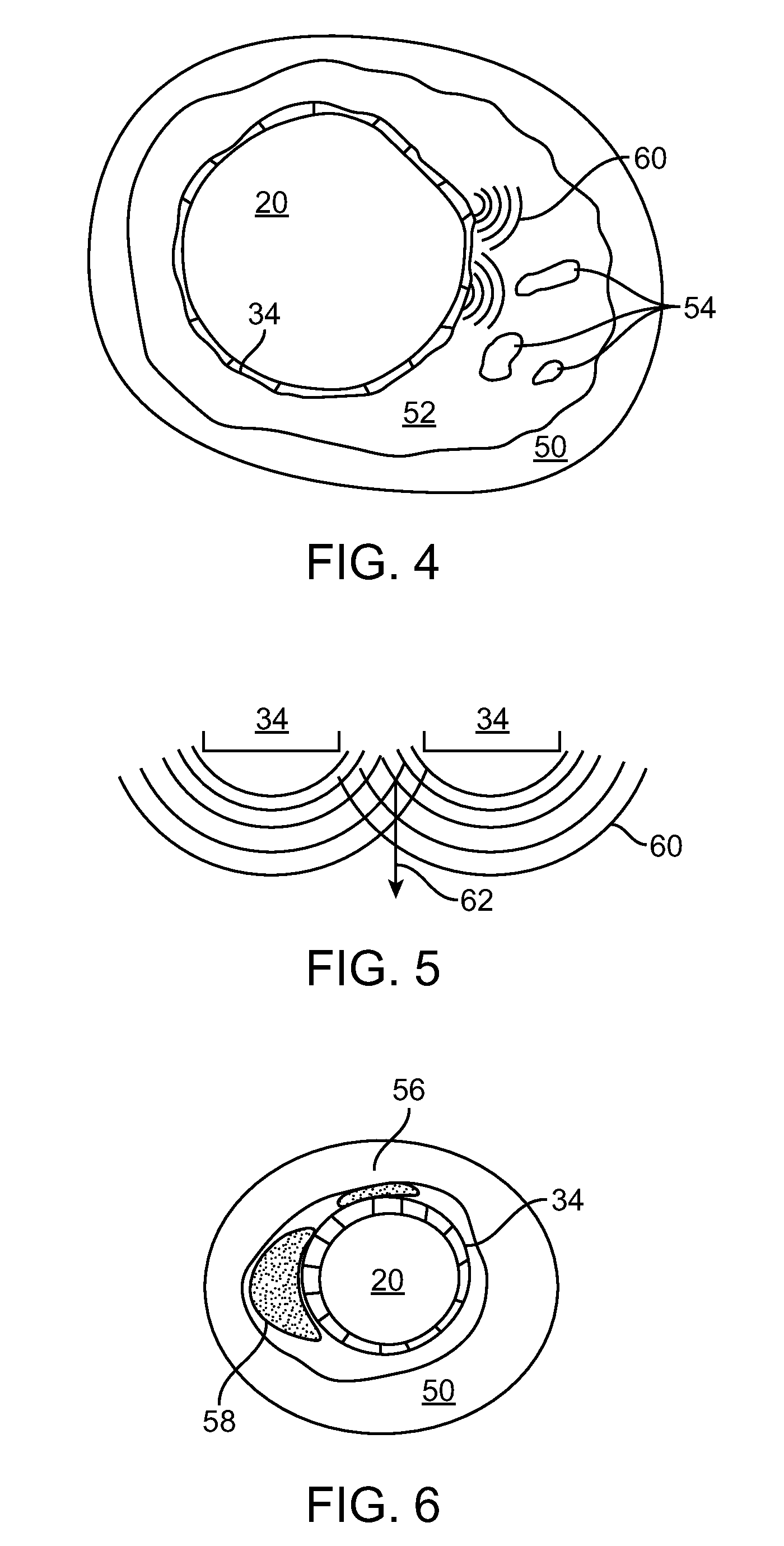Inducing Desirable Temperature Effects On Body Tissue Using Alternate Energy Sources
a technology of temperature effect and body tissue, applied in the field of medical devices, systems and methods, can solve the problems of stents not being used or presenting significant disadvantages, implants can present risks, and the benefits of balloon dilation may be limited in tim
- Summary
- Abstract
- Description
- Claims
- Application Information
AI Technical Summary
Benefits of technology
Problems solved by technology
Method used
Image
Examples
Embodiment Construction
[0044]Many therapies have been developed to replace or improve upon traditional balloon angioplasty and stents. The alternative devices described in the BACKGROUND OF THE INVENTION either cut, ablate, or vaporize diseased tissue in an artery. For example, laser devices vaporize plaque and flush it downstream. Atherectomy devices excise plaque and suck it out of the body. Cutting balloons incise the artery wall, damaging the tissue.
[0045]It would be advantageous to provide systems and devices that do not cut, ablate, or vaporize. Three modalities of treatment avoid these drawbacks and include: cooling the tissue; non-ablative forms of direct molecular denaturing; and non-ablative heating. Cooling has been implemented using devices such as Boston Scientific's Cryo-cath. Direct molecular denaturing can be achieved with radiation—gamma rays, for instance.
[0046]The present invention is directed to the remaining modality, non-ablative heating using non-RF energy. The embodiments disclosed...
PUM
 Login to View More
Login to View More Abstract
Description
Claims
Application Information
 Login to View More
Login to View More - R&D
- Intellectual Property
- Life Sciences
- Materials
- Tech Scout
- Unparalleled Data Quality
- Higher Quality Content
- 60% Fewer Hallucinations
Browse by: Latest US Patents, China's latest patents, Technical Efficacy Thesaurus, Application Domain, Technology Topic, Popular Technical Reports.
© 2025 PatSnap. All rights reserved.Legal|Privacy policy|Modern Slavery Act Transparency Statement|Sitemap|About US| Contact US: help@patsnap.com



